As a Korean who grew up in Seoul, I’m excited to share what to do in Seoul for a day.
While travel is one of my favorite things to do in the world, planning can be so overwhelming.

That’s why in this itinerary, I go hour-by-hour about exactly what to see, do and eat!
By following this itinerary, you’ll hit all the major sightseeing locations and leave with a solid foundation of Korean history.
In addition, I’ll introduce you to all my favorite places, from the best shopping areas to cool coffee shops, so that you get a taste of the local life of young adults here in Seoul.
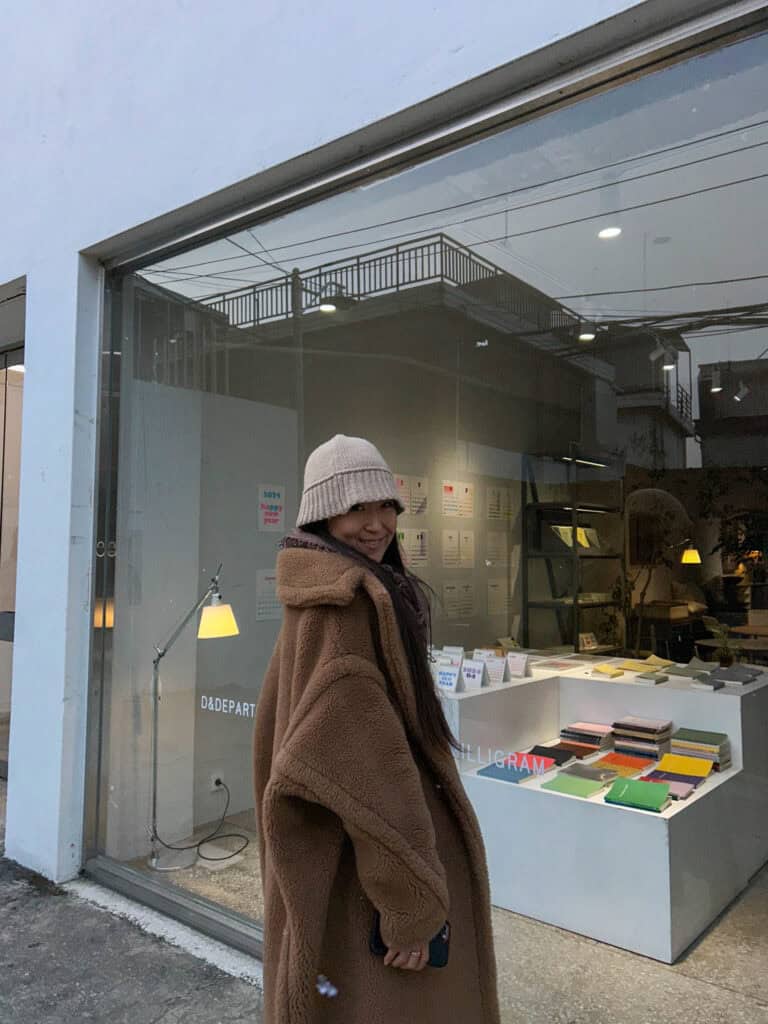
Did I mention we’ll hit authentic Korean restaurants and bars that use traditional ingredients?
I’ve got you covered with all the local tips for good food and how to spend late nights in Seoul.
With that, let’s dive into what to do in Seoul for a day!
What To Do in Seoul for a Day (Itinerary Summary)

Morning (9am-12pm)
- Gyeongbokgung Palace: Main Royal Palace of Joseon Dynasty
- National Palace Museum of Korea: Learn about the Joseon Dynasty
- Bukchon Hanok Village: Take in the Beauty of Traditional Korean Houses
Afternoon (2-5pm)
- Gwangjang Market for Lunch: Korea’s OG Market from the Late-Joseon Dynasty
- Seongsu-dong: Shop & Stroll the Brooklyn of Seoul
Evening (5-8pm)
- Authentic Korean Food for Dinner: Korean BBQ at Seongsu-dong Galbi Alley, or Contemporary Korean & Fine Dining in Classy Hannam
- N Seoul Tower: Gaze at the Seoul Night Views
- Myeongdong Shopping Street: Gift Shopping & Street Food
Night (8pm onward)
- Wholesome (and Family-Friendly) Options: Sing at a Noraebang, Relax at a Korean Bathhouse, or Korean Food by the Han River
- Bars & Clubs | Party like a Korean: Legendary Cocktails, Speakeasies, Live Performances, Rooftop Bars, EDM, Foreigner-Friendly Nightlife
What To Do in Seoul for a Day
Morning (9am-12pm)
Gyeongbokgung Palace (경복궁): Main Royal Palace of Joseon Dynasty
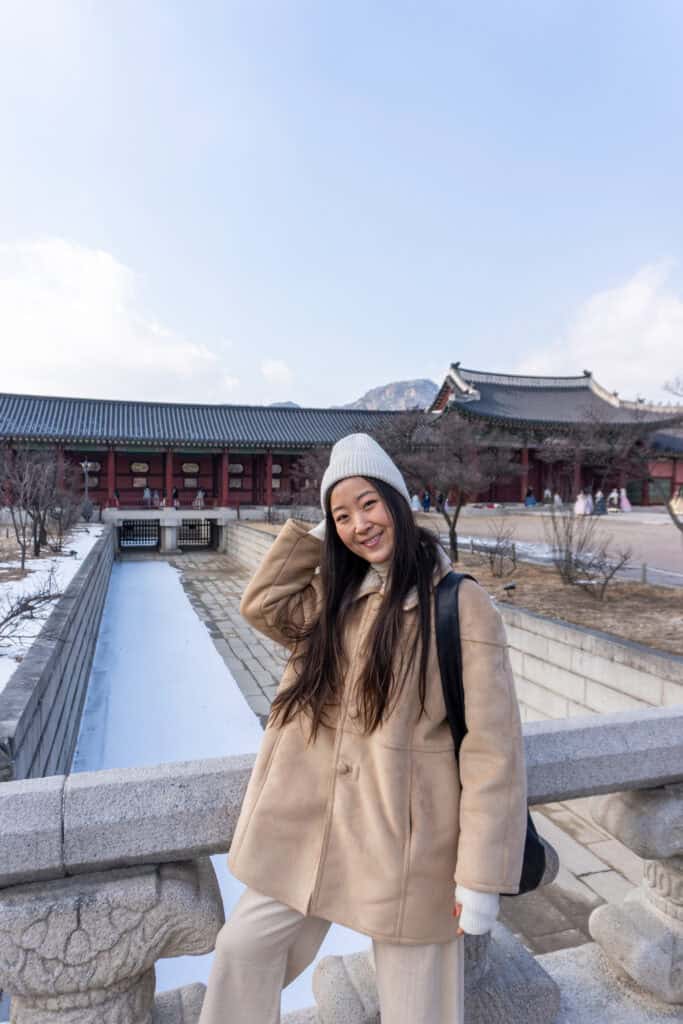
If you have time for just one royal palace in Seoul, it should be Gyeongbokgung Palace.
Gyeongbokgung is the main and largest palace of the Joseon Dynasty, which ruled Korea from 1392 to 1910.
Although it was destroyed during the Japanese invasion in 1592 and yet again during the 35 years of Japanese colonial rule (from 1910 until the end of World War II in 1945), it’s a beautiful restored site today.
For Insta-perfect pictures, you can rent a hanbok (traditional Korean clothing) and prance the palace grounds like a true royal.
- Cost: 3,000 KRW (2.30 USD)
- Time: 1.5 hours
- Hours: Spring (March-May): 9am-6pm; Summer (June-August): 9am-6:30pm; Winter (November-February): 9am-5pm
- Address: 161 Sajik-ro, Jongno District, Seoul, South Korea (Subway: Gyeongbokgung Station, Exit 5)
National Palace Museum of Korea (국립고궁박물관): Learn about the Joseon Dynasty
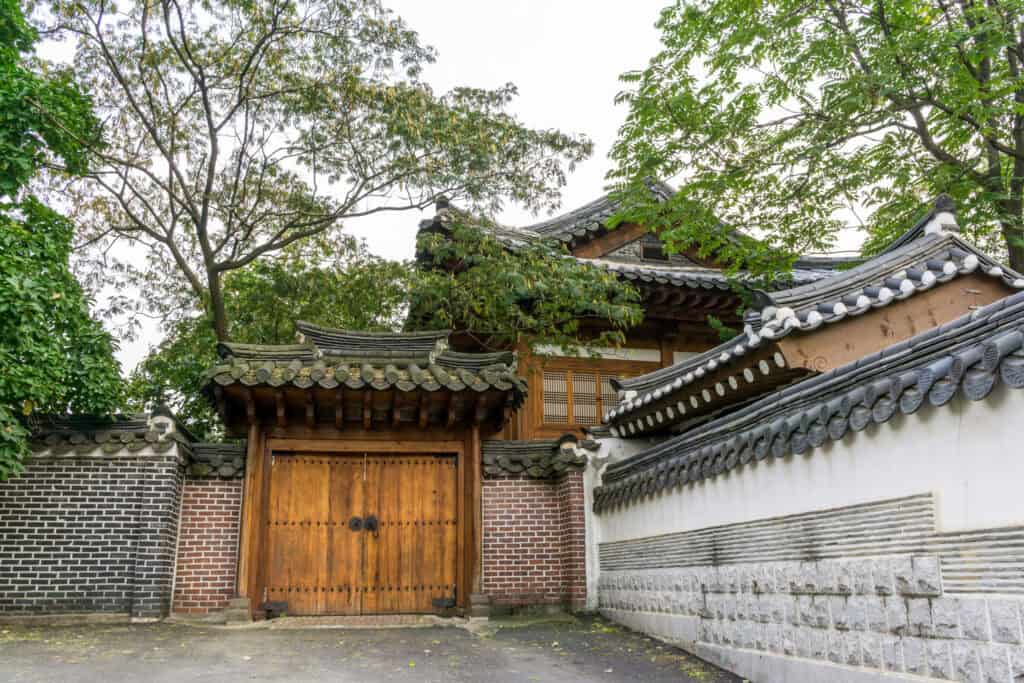
This free museum, where you can learn all about the Joseon Dynasty, is conveniently located right within Gyeongbokgung Palace.
Learn about how the Joseon people measured time, appreciate the portraits of Joseon kings, and imagine being lifted and transported like a female royal, in a palanquin.
- Cost: Free
- Time: 1.5 hours
- Hours: On Wednesday and Saturday – 10am-9pm; All Other Days – 10am-6pm
- Address: 12 Hyoja-ro, Jongno District, Seoul, South Korea (Subway: Gyeongbokgung Station, Exit 5)
Bukchon Hanok Village (북촌 한옥마을): Take in the Beauty of Traditional Korean Houses

From the museum, it’s about a mile walk (1.5km, ~20 min) to Bukchon Hanok Village.
In this beautiful neighborhood, you can admire the beauty of 1,500 hanoks, which are traditional Korean houses from the Joseon dynasty.
Most of the hanoks in Bukchon Village were built in the 1920s and actually incorporate some Western architectural features, such as using glass for windows (instead of Korean paper coverings made from hanji).
For the most picturesque views of the hanoks, Naver Maps your way to the address below (Google Maps doesn’t work for walking directions in Korea!).
- Time: 1 hour
- Address: 31-1 Gahoe-dong, Jongno-gu, Seoul, South Korea (Subway: Anguk Station, Exit 2)
Optional Add-Ons
- For Lovers of Royal Palaces: Changdeokgung Palace was the secondary palace of the Joseon Dynasty and is about 1 mile (1.6km, ~20 min walk) east of Gyeongbokgung. This palace is a UNESCO World Heritage Site and has a peaceful Secret Garden from which you can appreciate the Korean way of building in harmony with nature. It costs 3,000 KRW (2.30 USD) to enter.
- Major Korean Buddhist Temple: Jogesa Temple was founded in 1395 and is the headquarters of the Korean Jogye order of Korean buddhism. It’s about half a mile (1km, 15 min walk) southeast of Gyeongbokgung.
- Outdoor River Stroll: There’s a very walkable promenade by Cheonggyecheon Stream, south of Gyeongbokgung. I’d especially recommend it during the winter, since you’ll get to see huge floating paper lantern sculptures that are part of the annual Seoul Lantern Festival.
Afternoon (2-5pm)
Gwangjang Market (광장시장): Korea’s OG Market from the Late-Joseon Dynasty

It’s time for lunch at Gwangjang Market, Korea’s original covered market with roots in the Joseon Dynasty.
Stuff your tummy with incredible Korean street food, like fresh rolls of kimbap and savory bindaetteok pancakes hot off the griddle.
Although Gwangjang Market technically opened in 1905, it’s located in the vicinity of the late Begoge Market (배오개 시장), which was a major market in Seoul during the late Joseon Dynasty.
Stroll around the market and step into the age-old shops where local Koreans come to buy elegant hanbok and celebratory fruits used in traditional marriage, ancestral honoring and baby 100th day birthday ceremonies.
Gwangjang Market is a ~20 minute bus ride from Gyeongbokgung.
- Time: 1.5-2 hours
- Hours: Food Market: 9am-11pm (open year-round); Shopping Market: 10am-7pm (closed Sundays)
- Address: 88 Changgyeonggung-ro, Jongno District, Seoul, South Korea (Bus: Jongro 5(o)ga, Gwangjang Market; Subway: Jongno 5(o)ga Station, Exit 7)
Seongsu-dong (성수동): Shop & Stroll the Brooklyn of Seoul
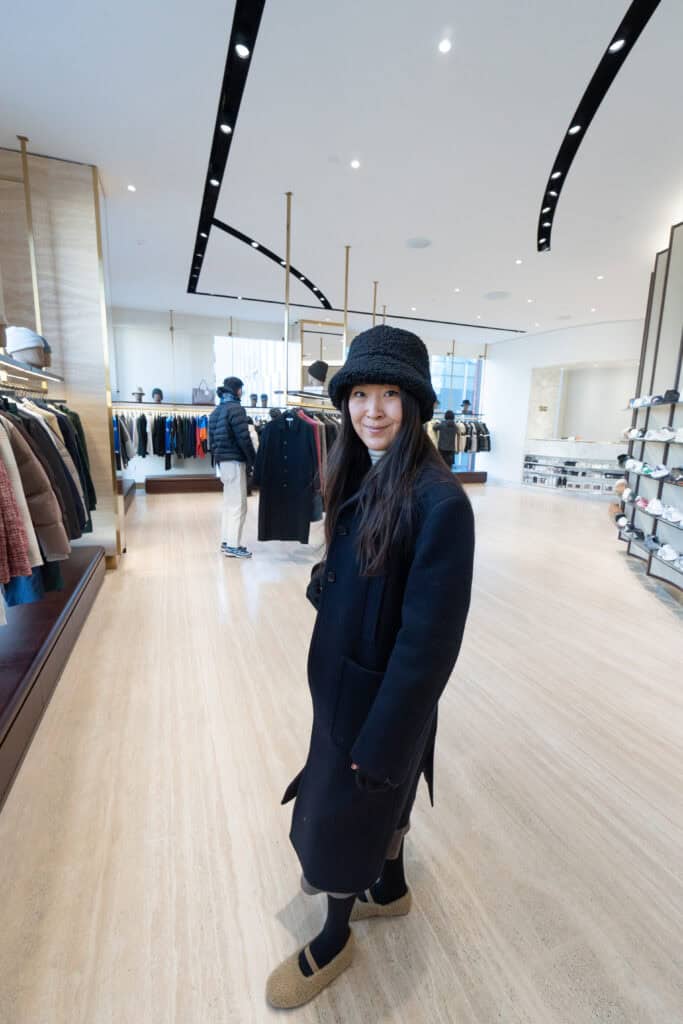
From Gwangjang Market, it’s a 20 minute subway journey to hip Seongsu-dong.
Seongsu-dong has been called the Brooklyn of Seoul, because like Brooklyn, this neighborhood has industrial roots.
Seongsu-dong used to be full of smaller-scale manufacturing plants and warehouses, some of which have now been converted into cool coffee shops, bars and flagship stores.
It’s also home to leather artisans and shoemakers, many of whom now offer leatherwork classes (unfortunately most of these workshops are in Korean!).
Now that we’ve spent some time learning about Seoul’s rich history and traditional culture, we’ll get a taste of local life in this hip neighborhood.
Funky, Space-Themed Flagship Store
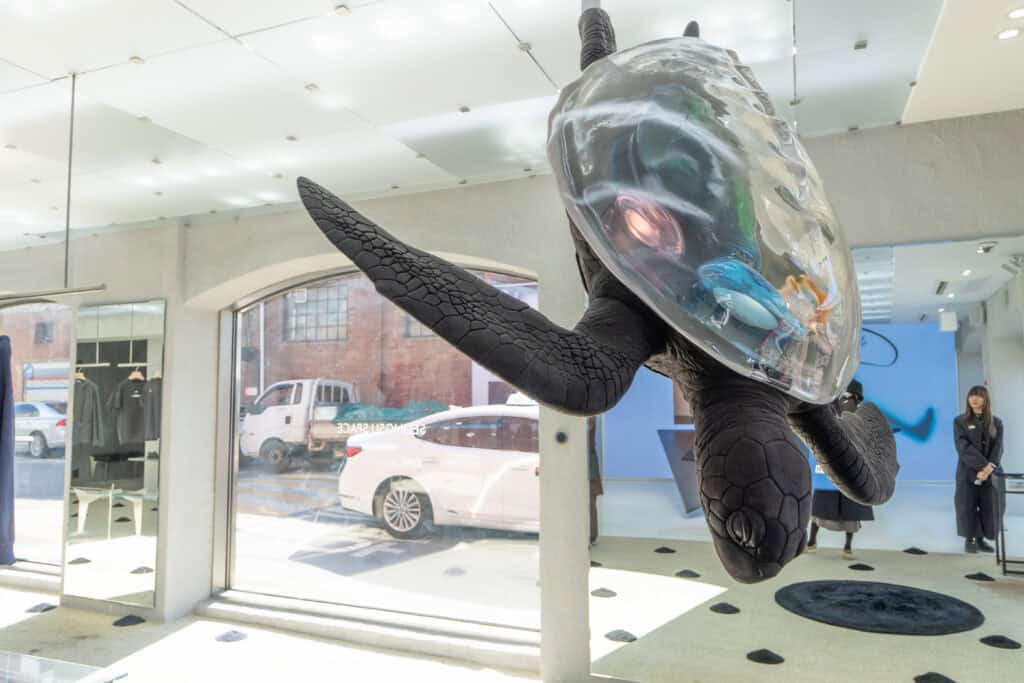
It’s kind of hard to focus on the clothing at Ader Error, given that a whole astronaut is floating from the ceiling and a spaceship is humbly humming over a pond of water.
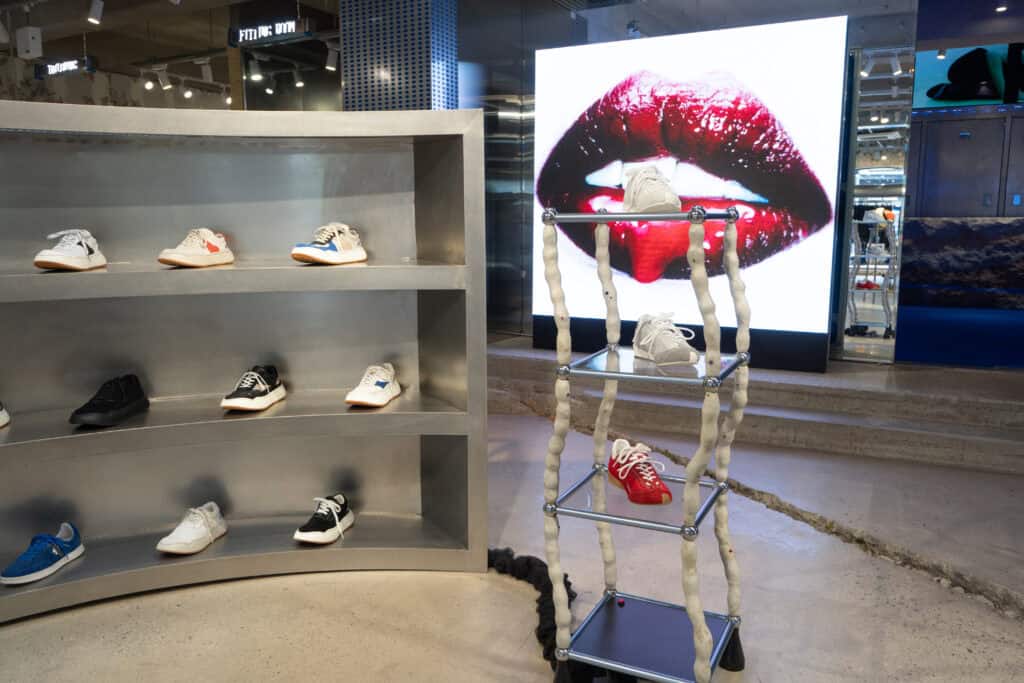
Come here to experience firsthand why in-person shopping is still thriving in Korea.
K-Beauty Lovers
You might recognize Amore Pacific from the likes of Neiman Marcus and Bergdorf Goodman, which hold this Korean skincare and makeup brand that leverages Asian botanical ingredients.
In the brutalist Amore Seongsu flagship store, you can try out not only Amore Pacific products, but also other brands owned by the parent company, including boujee Sulhwasoo, and the more budget-friendly Laneige and Innisfree.
Warehouse Turned Into a Cafe & Gallery
In its former life, Daelim Changgo was a rice mill (1970s) and a warehouse (1990s).
In 2011, Hong Dong Hee breathed a second life into this historic location and transformed it into a coffee shop and beloved cultural space.
This is one of the OG spots that made Seongsu-dong cool.
Cutesy Gift Shop
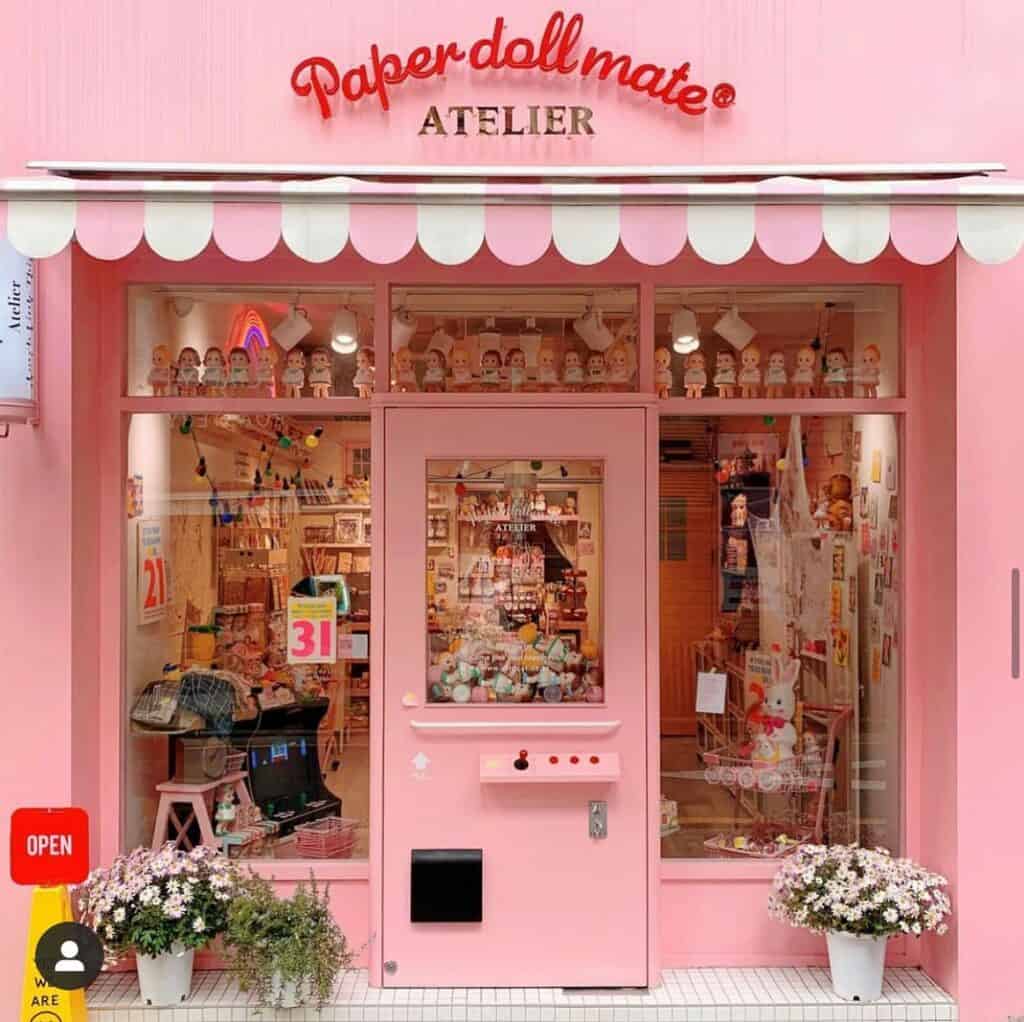
One thing you can’t easily find outside of Asia are cutesy things, like the endless girly creativity you’ll find at Paper Doll Mate Atelier, from their iconic baby girl dollies to their sparkly keychains and adorable cards.
Other Options
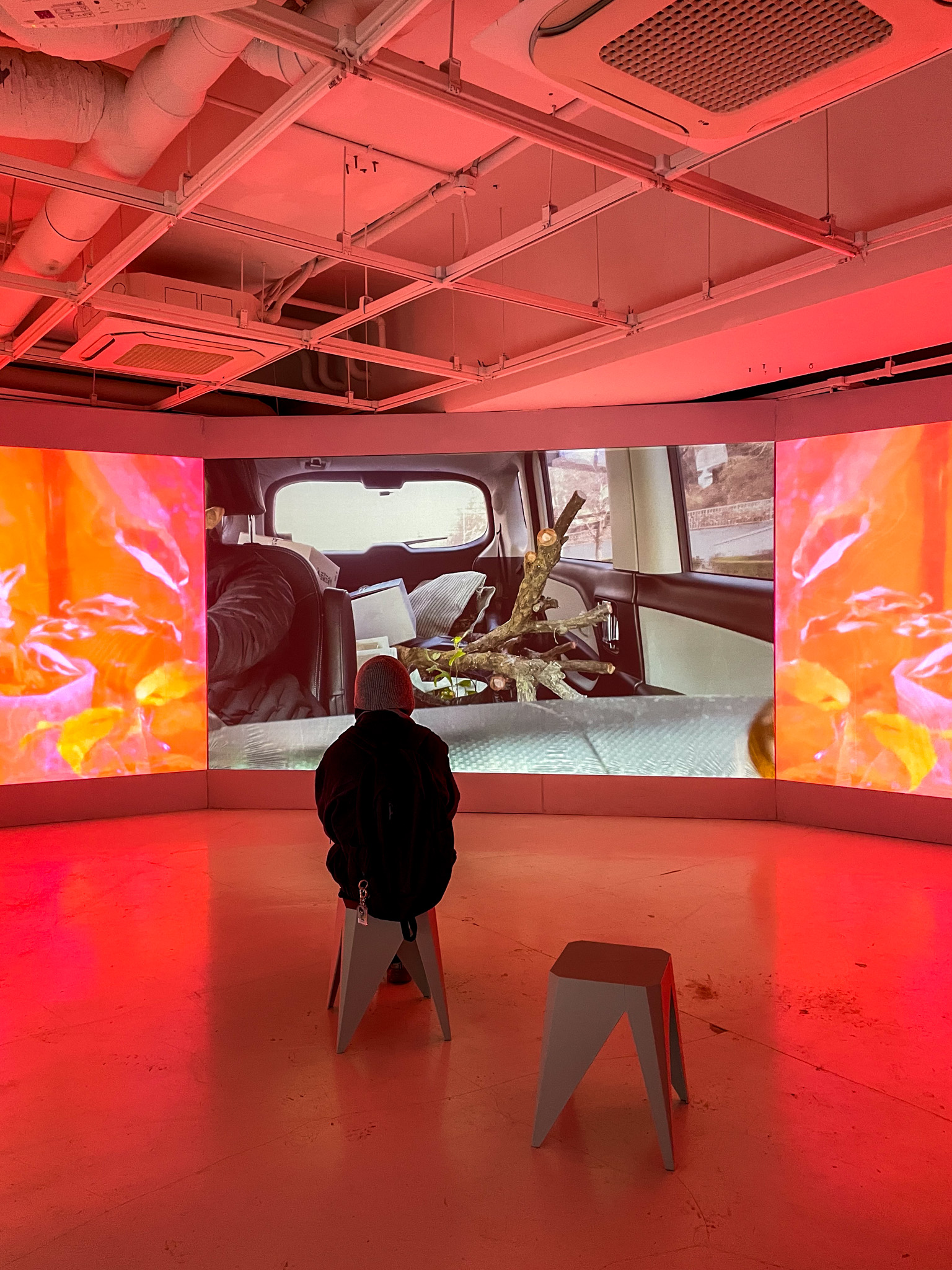
- Hip & Trendy Shopping: Hangangjin in Hannam is where it’s at for the most up-to-date Korean fashion trends. Here’s your guide to what to do in Hannam.
- Like Young Korean Locals: Seochon is where young Koreans go out for dates and to hang out with friends. I loved checking out the edgy and historic gallery BOAN 1942 and vibing out at the hanok-style coffee shop, Onground Gallery.
- Market Lovers: Namdaemun Market is a historic market over 600 years old (since 1414!). Here you can haggle reasonable prices for all kinds of goods, but they’re primarily known for their clothing and shoes.
- History Buffs: At the free National Museum of Korea, you can experience the breadth of rich ancient and modern Korean history, from stone cleavers from the Paleolithic Era, to artifacts from the Joseon Dynasty (1392-1897) up until the Korean Empire (1897-1910).
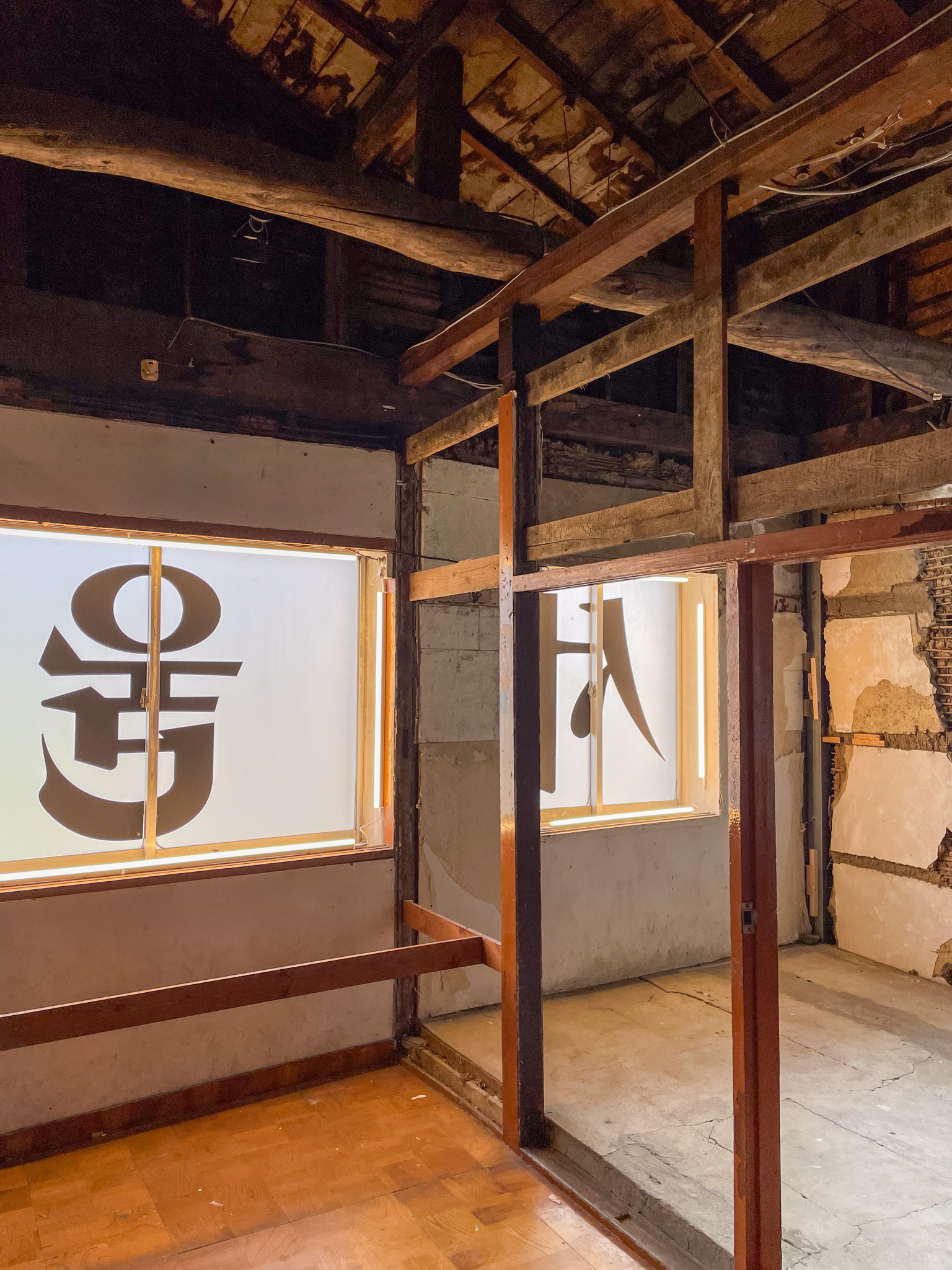
Evening (5-8pm)
Authentic Korean Food for Dinner
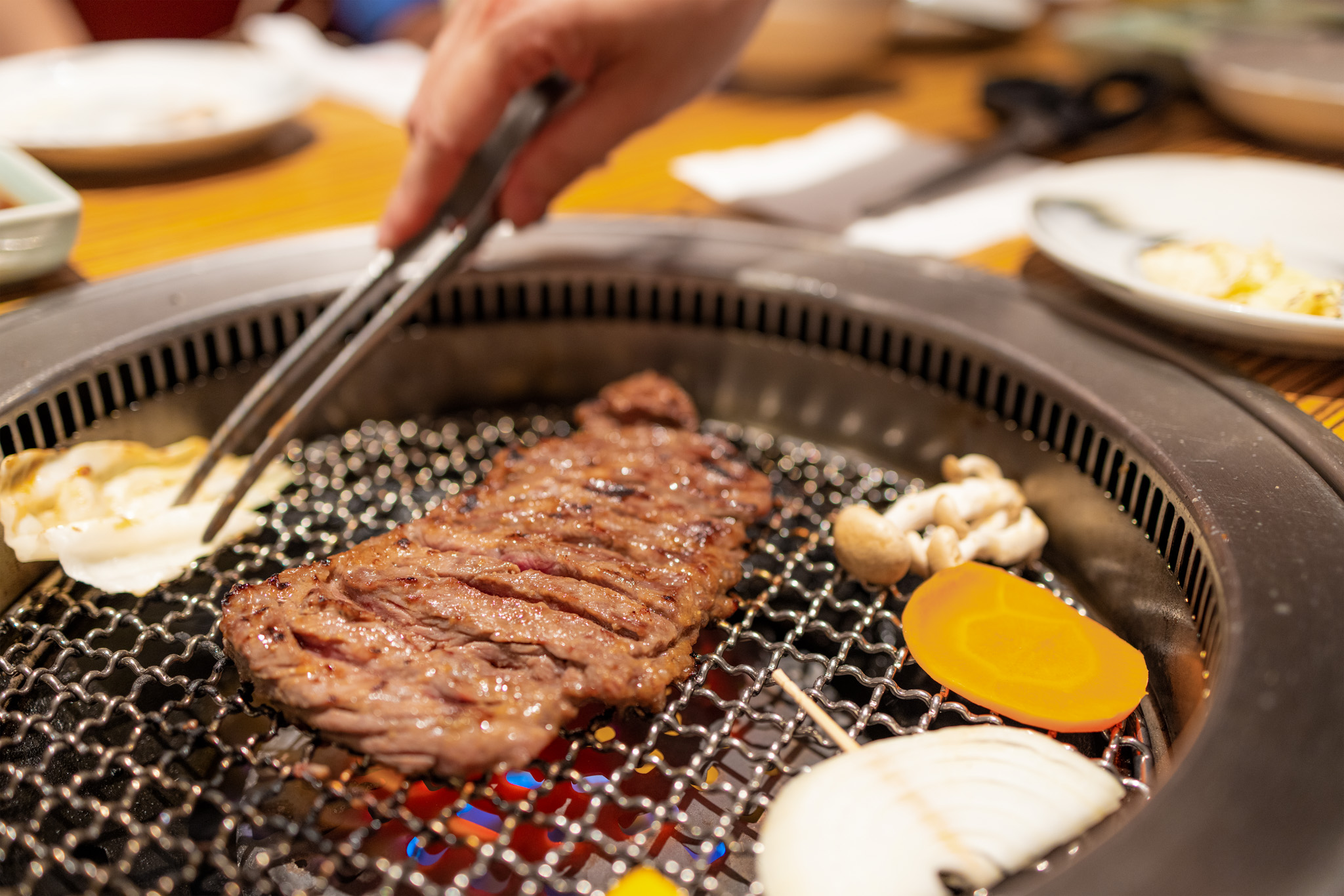
Option 1: Korean BBQ at Seongsu-dong Galbi Alley
Realistically, you might start getting hungry and a little tired while at Seongsu-dong.
Head to Daesung Galbi, a local favorite Korean BBQ restaurant that forged Seongsu-dong Galbi Alley (galbi is Korean for KBBQ!).
Daesung is best known for their Pork Galbi (20,000 KRW, 15 USD) and their tasty af (and complimentary!) Kimchi Stew.
- Hours: 12pm-9pm (Closed for Break Time from 2:30-4:30pm); Closed Sundays. Note: Entry is possible only until 7:30pm!
- Address: 26 Sangwon 1-gil, Seongdong-gu, Seoul, South Korea (Subway: Ttukseom Station, Exit 6)
Option 2: Contemporary Korean & Fine Dining in Classy Hannam
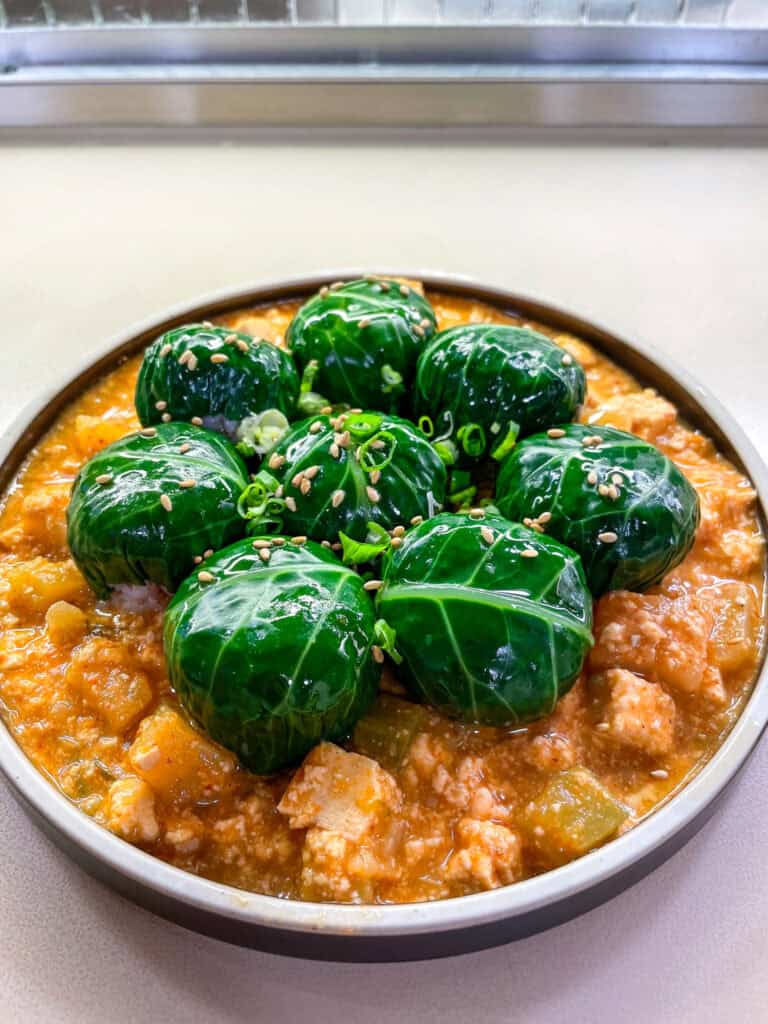
If you can hold your hunger, let’s make our way back west to Hannam, which will bring us closer to our late-night destinations (Namsan’s N Seoul Tower and Myeongdong).
Hannam is an affluent neighborhood full of residential townhouses (unlike the typical apartment life lived by most Seoulites). So of course, Hannam has a variety of one-of-a-kind eateries!
I unpack both budget-friendly and fancy options here.
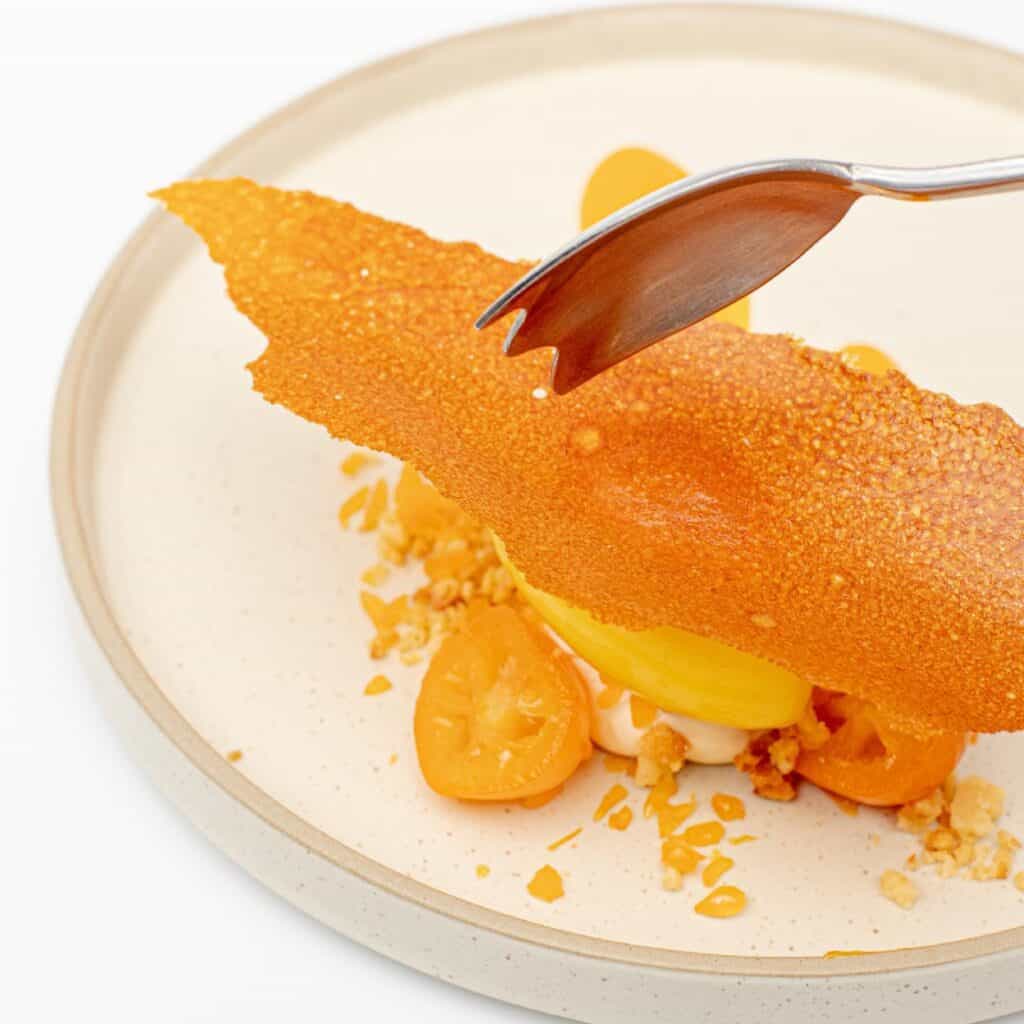
Hannam is a ~20 minute subway ride from Seongsu-dong.
- Clean Korean Flavors: Vibe out to cheerful 80s Korean music as you take in the simple but creatively curated combination of Korean ingredients at Nanpo. I highly recommend the glistening Lotus Rice Rolls plopped atop the Strong Soybean Paste (12,000 KRW, 9 USD). These rolls are just as tasty as they are adorable!
- Old-School Korean Rotisserie Chicken: As a Korean, what we grew up referring to as Korean fried chicken is a little different than how it’s sold in the US. It’s the type of old-school, chicken-on-a-spit that you’ll find at Hannam-dong Hanbang Chicken. Hanbang has been around for 20 years, and bake their chicken over oak firewood, after stuffing it with sticky rice, jujube and ginkgo nut. Top off the chicken with a refreshing beer, in classic Korean chimaek (chicken + maekju, which is Korean for beer) style.
- Fine Dining: Soseoul Hannam’s head chef, Eom Tae-cheol, recreates traditional cuisine into memorable delicacies that leave a strong imprint like a so-sul, or a novel – the namesake of this Michelin one-star restaurant.
- Dessert Omakase: It’s true that there’s always room for dessert, especially the kind of sweet sensibilities prepared by JL Dessert Bar’s pastry chef, Justin Lee. You can certainly order a la carte, but if you’re a big foodie, you can consider their set menus, complete with wine pairings (65,000 KRW, 48 USD).
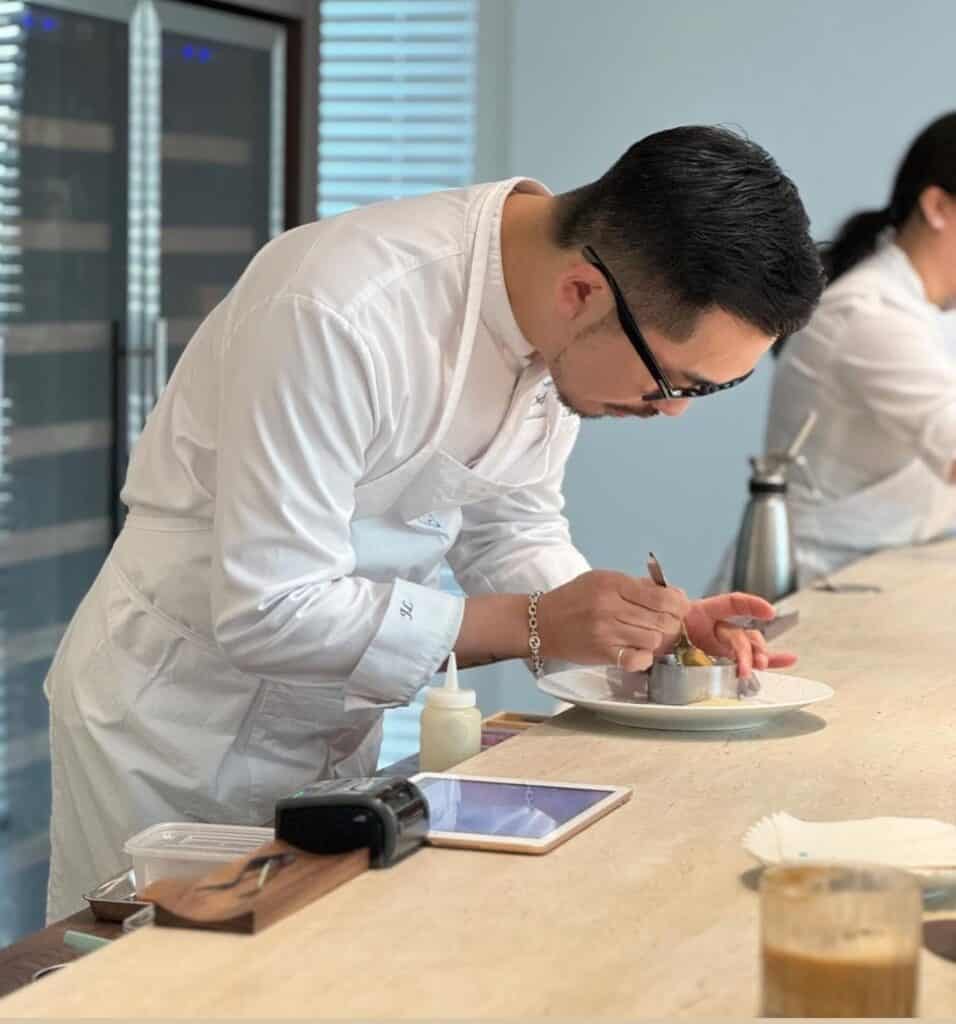
N Seoul Tower (남산서울타워): Gaze at the Seoul Night Views
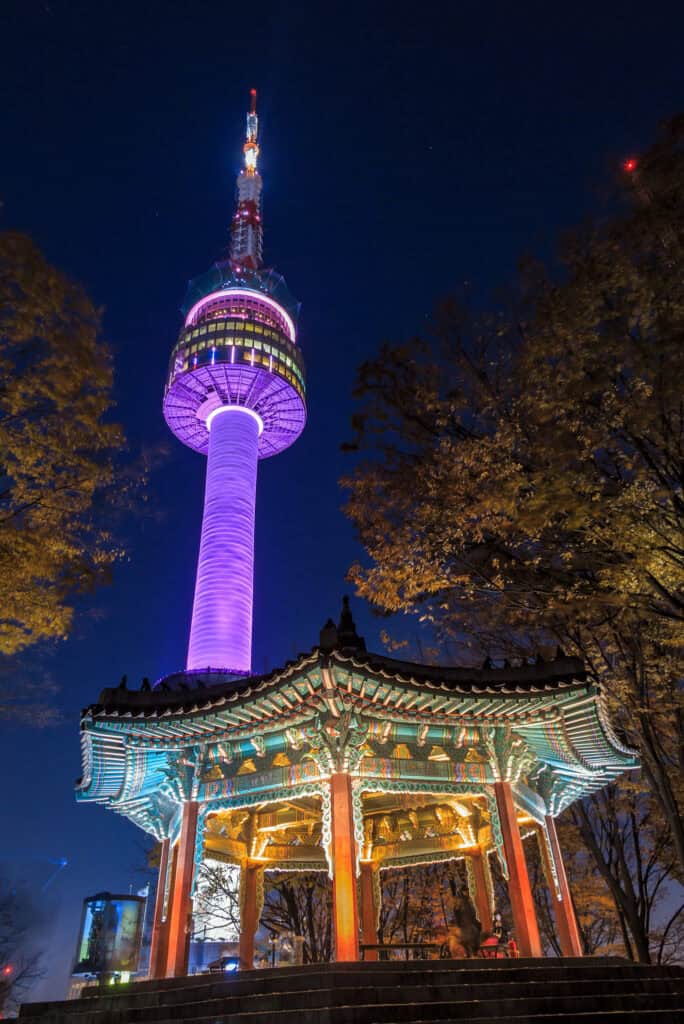
If you’re a sucker for city night views like me, you’ll love what you see in the Namsan cable car to and from the observation deck of N Seoul Tower.
N Seoul Tower is an operational TV and radio tower that transmits almost 50% of the broadcasts watched by the connected population in South Korea.
Namsan Tower stands tall at ~1660 ft (~500 m) in elevation.
- Cable Car
- Costs – Adults: 15,000 KRW (11 USD); Children: 9,000 KRW (7 USD)
- Hours – 10am-11pm
- Address – Departs from 83 Sopa-ro, Jung-gu, Seoul (Subway: Myeongdong Station, Exit 3)
- Bus
- You can also get to N Seoul Tower by bus, which can be an economical option. I would Naver Maps to N Seoul Tower for the best route using public transportation.
- Observation Deck
- Costs – Adults: 21,000 KRW (15.50 USD); Children & Elderly: 16,000 KRW (12 USD)
- Hours – Weekdays: 10am-10:30pm; Weekends & Public Holidays: 10am-11pm
Myeongdong Shopping Street (명동거리): Gift Shopping & Street Food

Chances are, you’re staying in Myeongdong, the Times Square of Seoul.
Head back to Myeongdong at night to shop for trinkets and munch on street food.
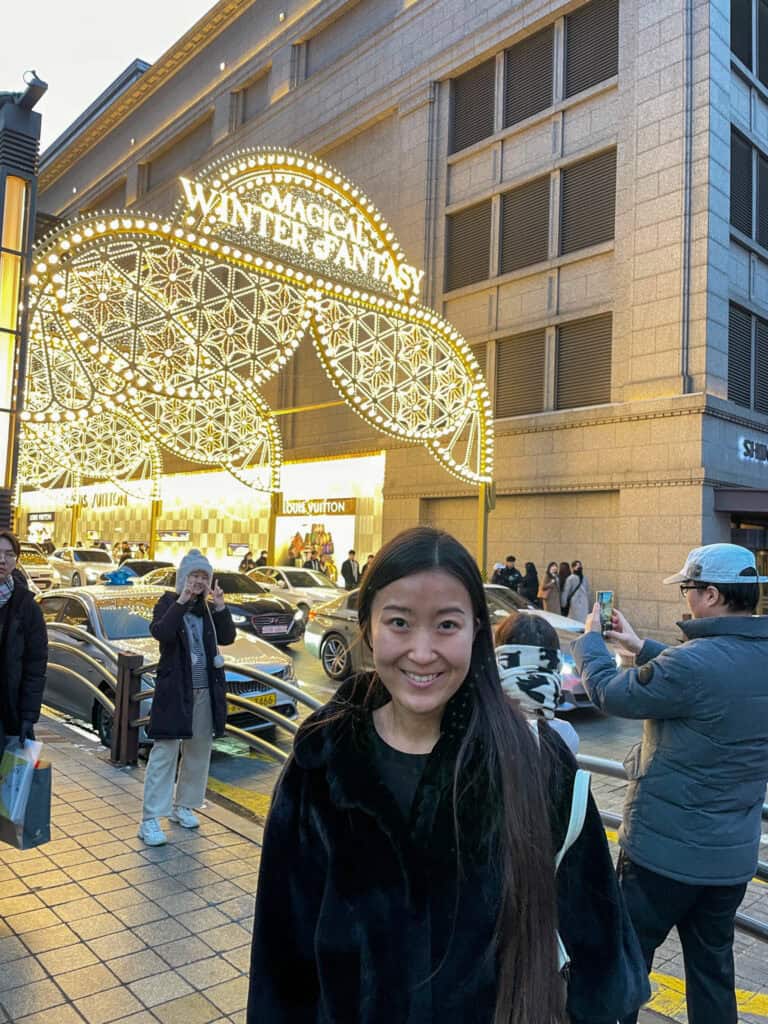
Perfect Opportunity to Shop for Gifts
You’ll be flagged down by cosmetic shop workers who will entice you with their packaged offers. They make it really easy to buy gifts like face masks (snail mucus face mask, anyone?!) and cute lip balms in fruit-shaped containers in bulk (I may have bought those as gifts, but kept one too many for myself 🤭).
While Myeongdong has evolved into a pretty touristy area in the past 10-15 years, I have to admit that it’s still really fun walking around and checking out the deals.
I grew up going to Myeongdong every weekend as a kid, but it still doesn’t get old.
Street Food: Perfect for Late Night Munchies
Help yourself to the piping hot skewers, or the corn dogs with french fries embedded in them.
Satiate your sweet tooth with foot-tall soft-serve ice cream and perfectly glazed strawberries that twinkle below the way-too-bright display lights.
All in all, I have to admit there’s too many options, but that’s part of the fun.
- Address: 8-3 Chungmuro 2(i)-ga, Jung District, Seoul, South Korea (Subway: Myeongdong Station, Exit 8)
Night (8pm onward)
Wholesome (and Family-Friendly) Options
It’s been a long day, folks, and we’re not quite finished yet.
Here are some chill activities to top off your last few waking hours in Seoul.
Option 1: Sing to your Heart’s Desire at a Noraebang
Koreans love to sing.
My favorite chain of noraebangs, which I’ve been frequenting since I was a kid, is Su Noraebang.
I’d recommend heading to their OG location near Hongik University, which is a college town known for its local nightlife. (Address: 367-39 Seogyo-dong, Mapo-gu, Seoul, South Korea)
Option 2: Relax at a Korean Bathhouse
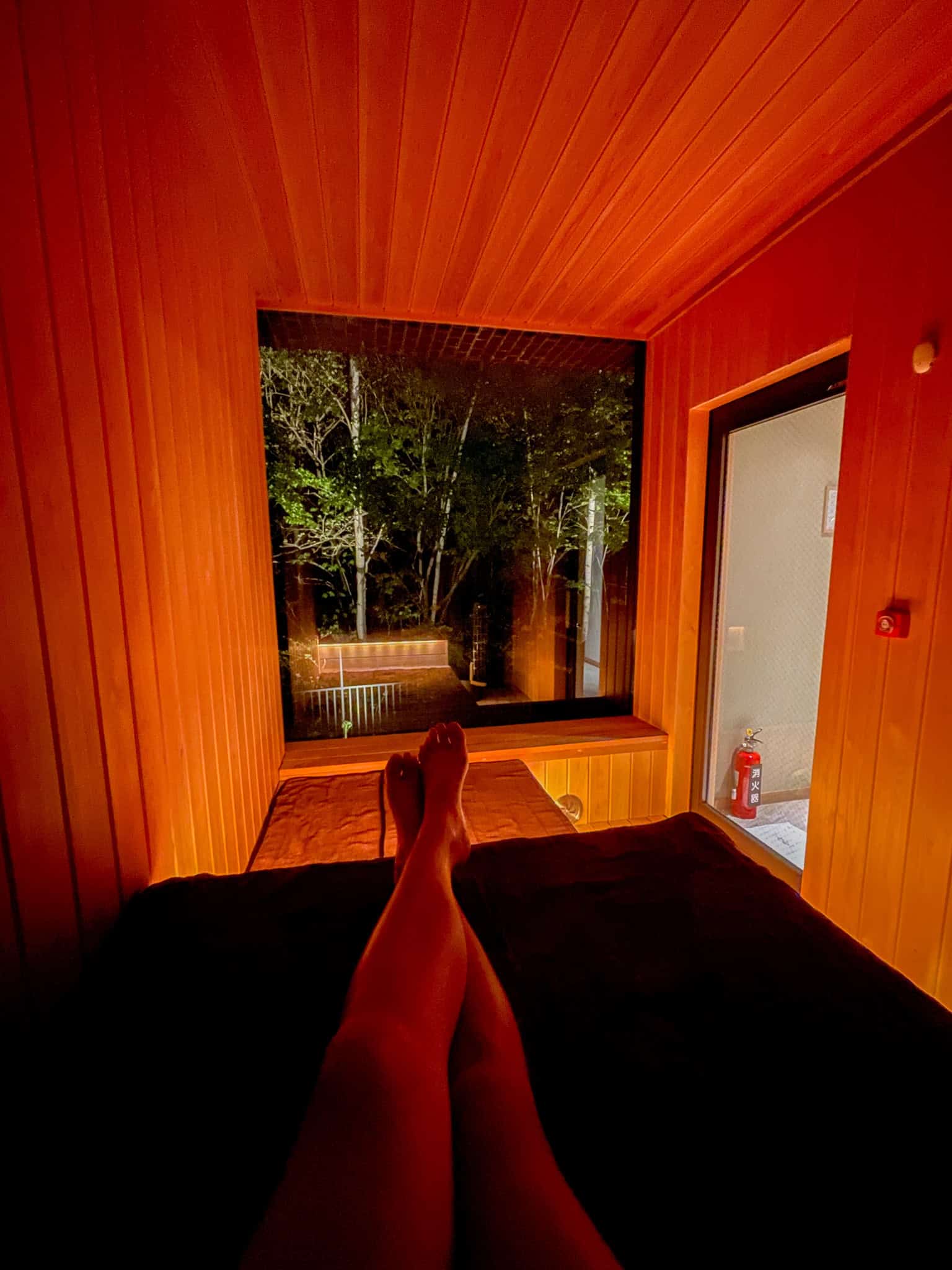
Jjimjilbangs are Korean bathhouses, where friends, families and couples alike come to vibe out at unisex saunas and nap atop heated ondol floors.
After breaking a sweat, recoup by downing ramen and boiled eggs like a true Korean.
Did I mention, most jjimjilbangs are open 24 hours?
The gender-divided locker rooms typically have hot tubs and cold plunges.
Jjimjilbangs are a great option, especially if you’re visiting Korea during the winter.
Check out spacious and clean Sparex in Dongmyo.
- Costs
- Adults: 5am-8pm – 13,000 KRW (10 USD); 8pm-5am – 15,000 KRW (11 USD)
- Children: 10,000 KRW (7.50 USD)
- Hours: Open 24 hours
- Address: 19 Jibong-ro, Changsin-dong, Jongno District, Seoul, South Korea
Option 3: Korean Food by the Han River
Don’t sleep on Korean convenience stores! There’s so many tasty packaged and freshly prepared snacks.
Head to a nearby convenience store like a true Korean and fill up a bowl of instant Shin Ramen with hot water and grab a couple cold Hite lagers.
Then head to the park to admire the Dongho Bridge, which lights up at night.
Bars & Clubs | Party like a Korean
Koreans know how to have fun! We have a very intense work hard, play hard culture.
Here are some lit options to experience local nightlife!
Legendary Cocktails
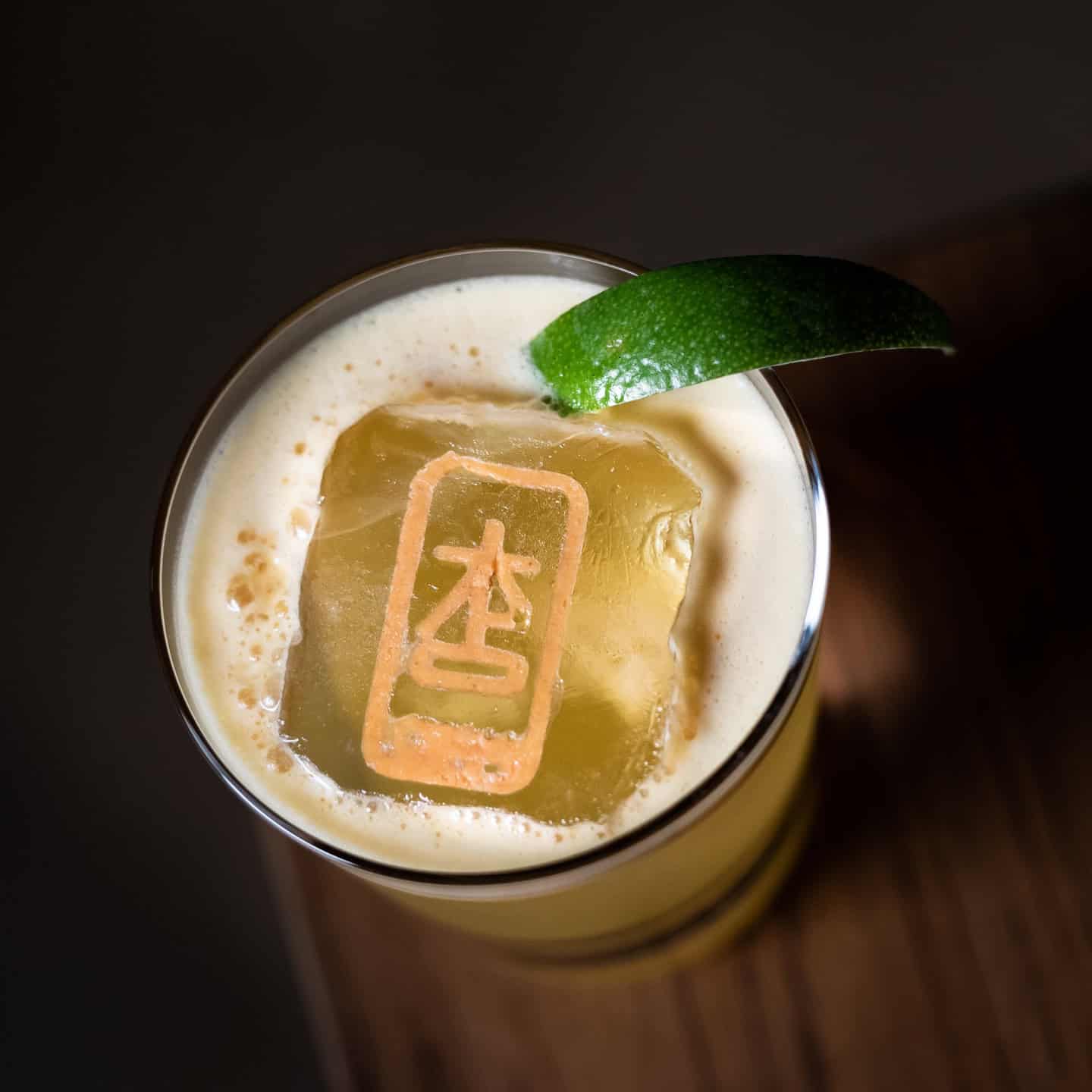
You’ll only find Bar Cham’s cocktails in Korea, since they’re made using traditional liquors like sweet potato soju and deodeok (it’s a root with a bitter profile!) infused gin.

All of this, in a traditional Korean hanok house, too! No wonder Bar Cham placed in Asia’s 50 Best Bars in 2024.

At Eau de Vie, owner-bartender Robin Hong crafts custom cocktails based on your preferences, and boy does he do a fantastic job! Plus, the cocktails are very reasonably priced, at 10,000-20,000 KRW (7.50-15 USD).

Speakeasies You Won’t Forget
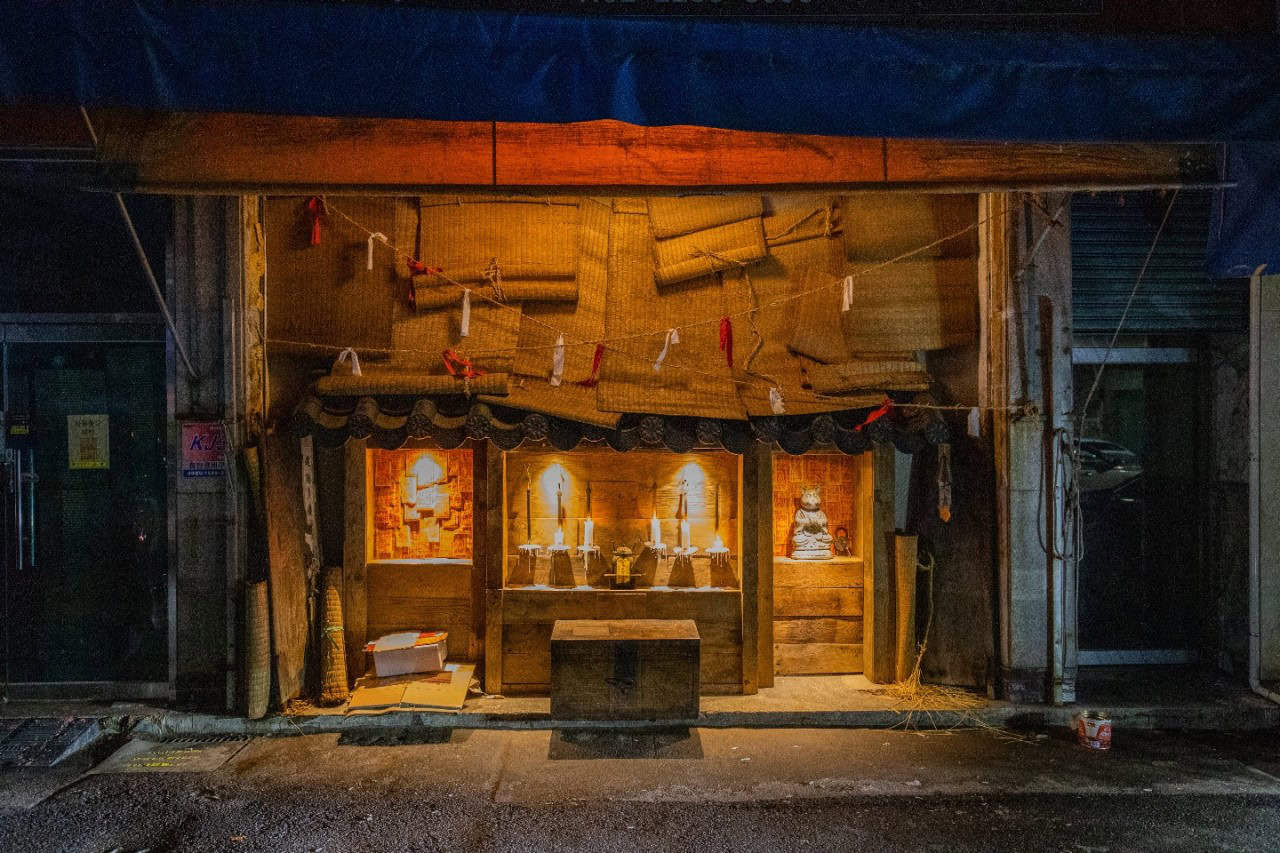
The colorful, zodiac sign-themed Zoosindang looks like a shabby shrine from the outside, in a nod to Sindang-dong’s shaman past. Why not gulp down a Rat Cocktail if you were born in the year of the Rat, like me (16,000 KRW, 12 USD)?
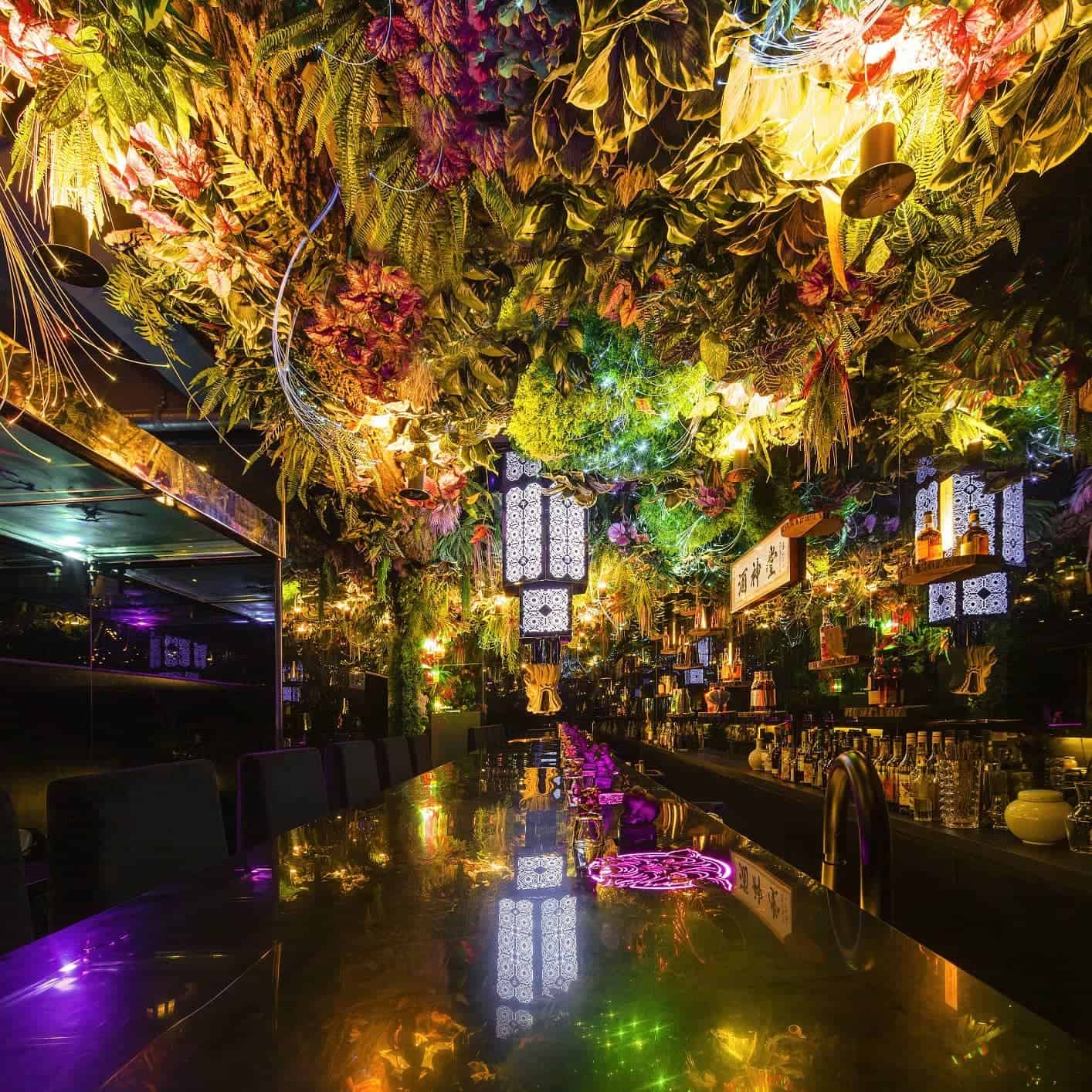
Imagine yourself a king in the Joseon Dynasty at Myeongdong Sookhee, which beckons Korean period drama, from the traditional liquor-based cocktails to the majestic decor.
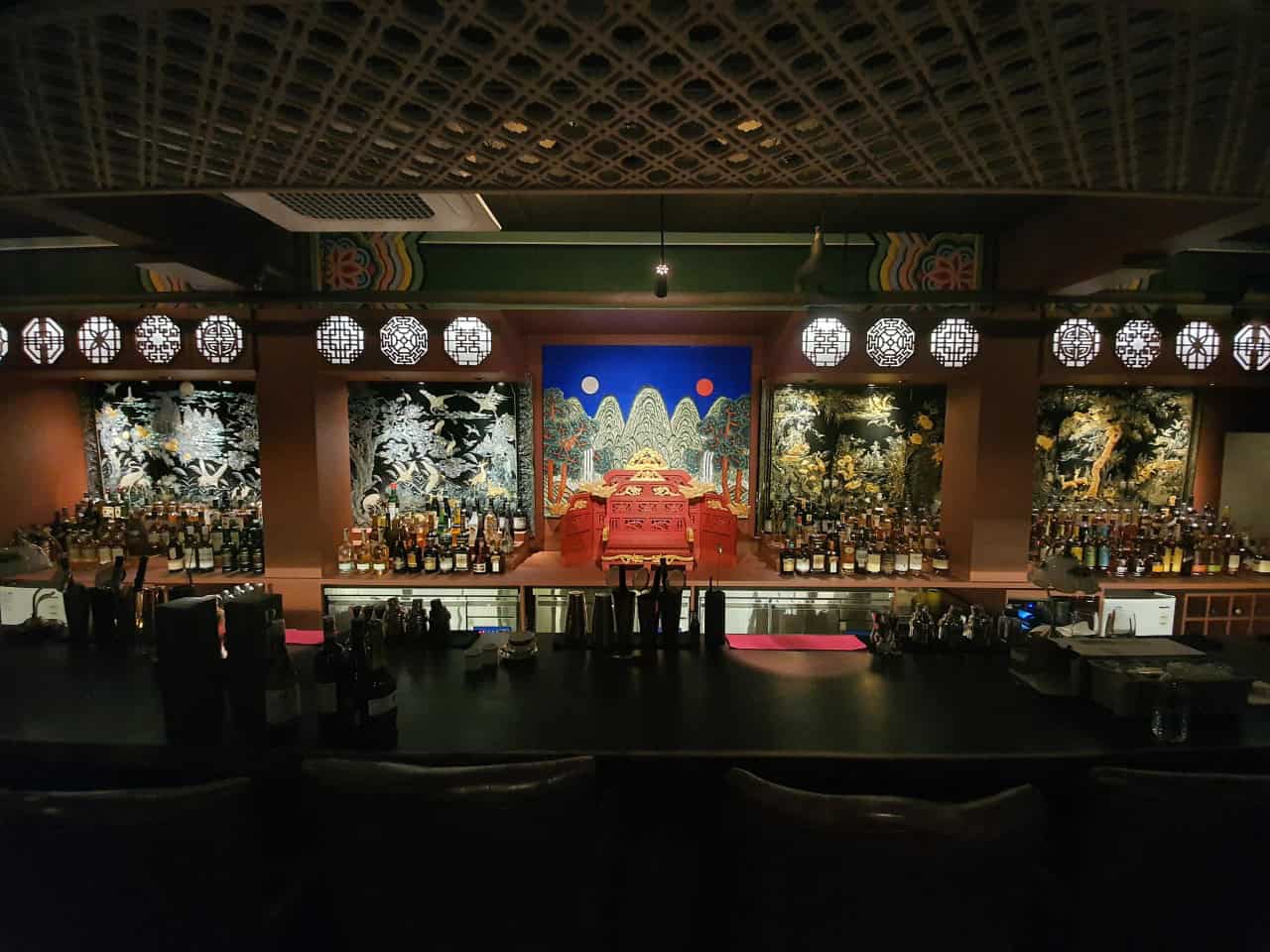
Live Jazz Performances
JAZZXOVER boasts some of the highest caliber of jazz in Seoul. They host live performances Wednesday through Sunday from 8:30-10:30pm. You can check out their upcoming shows on their Instagram.
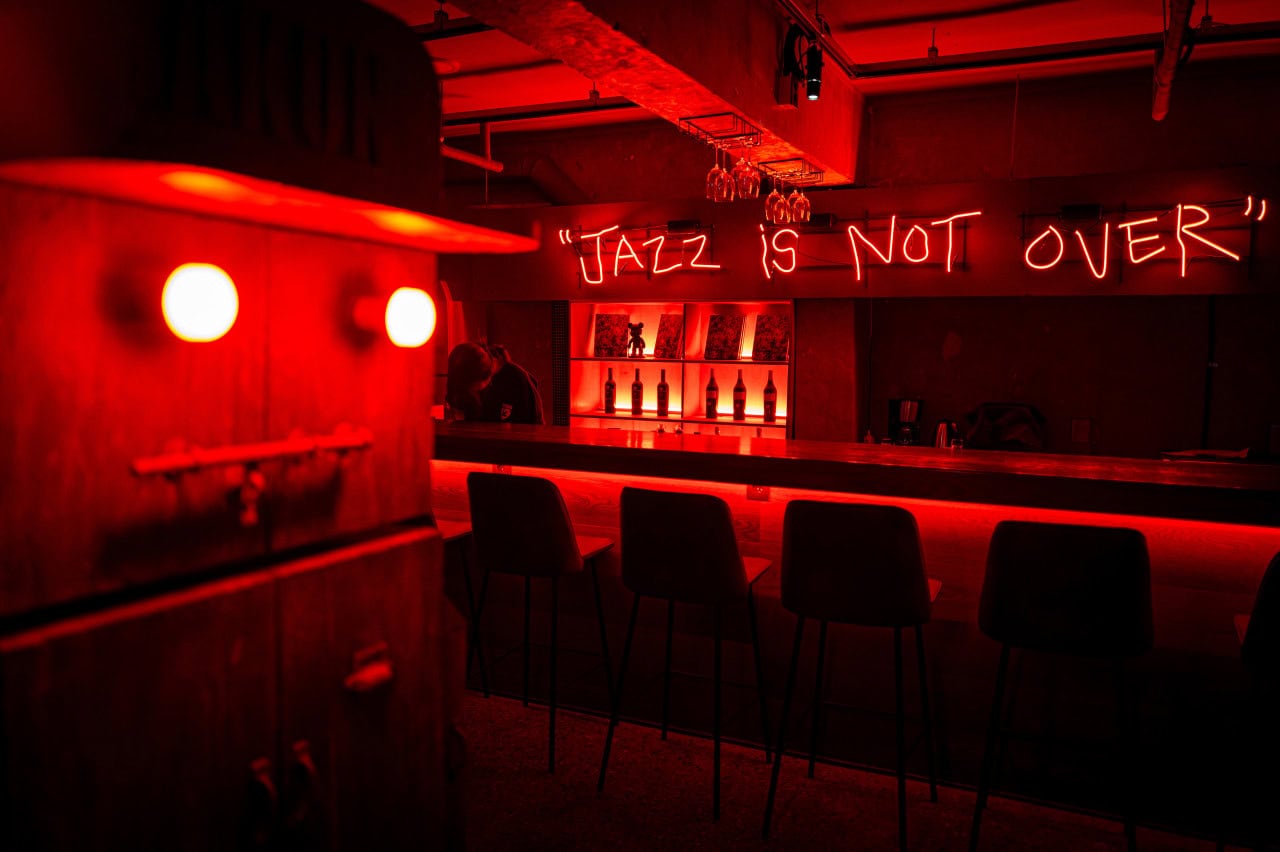
Rooftop Bars with Dazzling Views
The views from N Seoul Tower are fantastic, as are the views of the iconic tower.
For a classy vibe, head to the hotel rooftop bar, Privilege.
For a more authentic, intimate experience, I’d recommend Sunsetmood Rooftop.
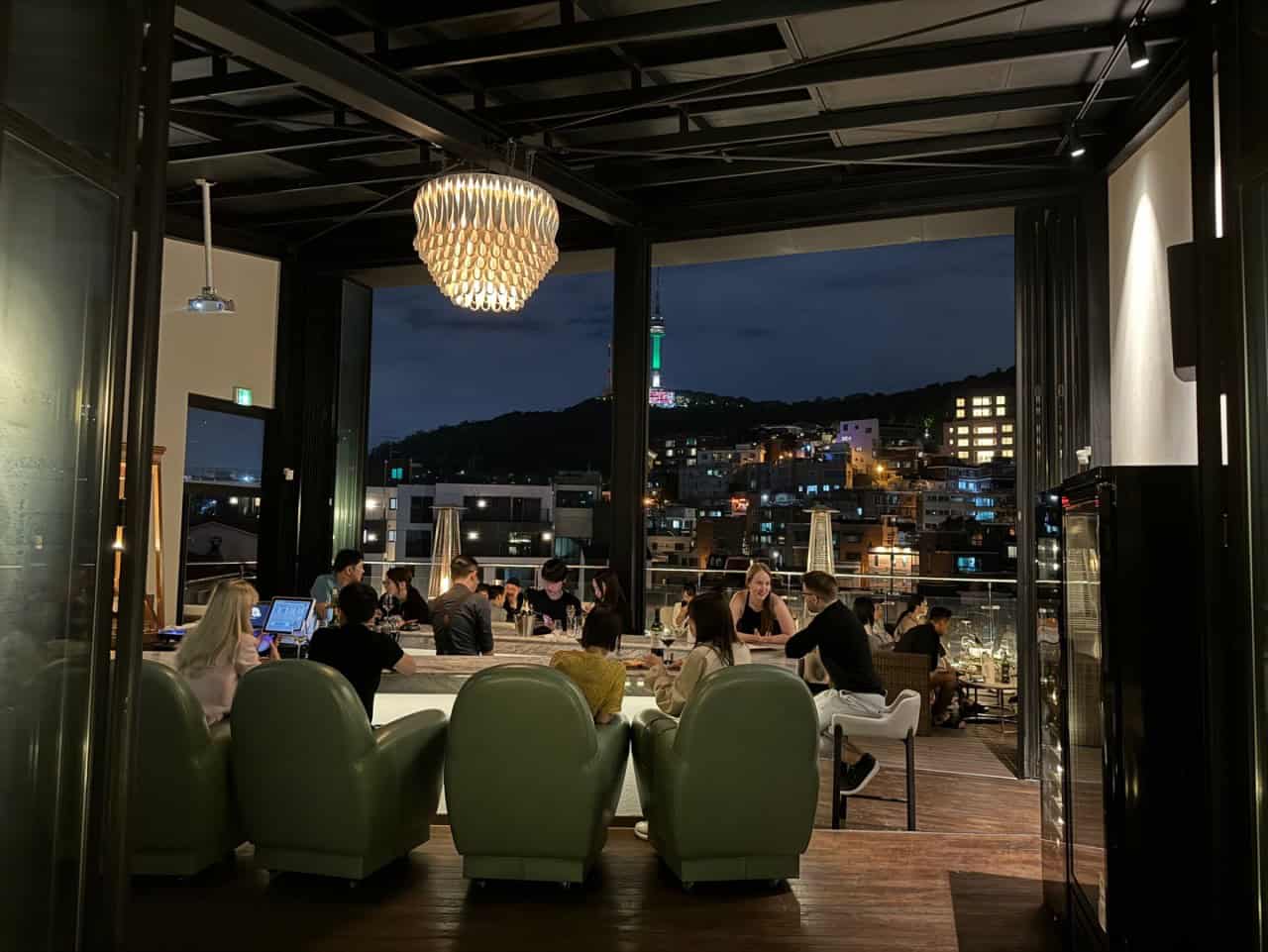
Bump to EDM All Night
Like Europeans (but a little less like Americans!), Koreans love dancing to electro.
I love XIMXIM’s music, and the fact that it’s a super local, Korean scene. Check out their YouTube – if you like these mixes, you’ll have a fun time at this lounge.
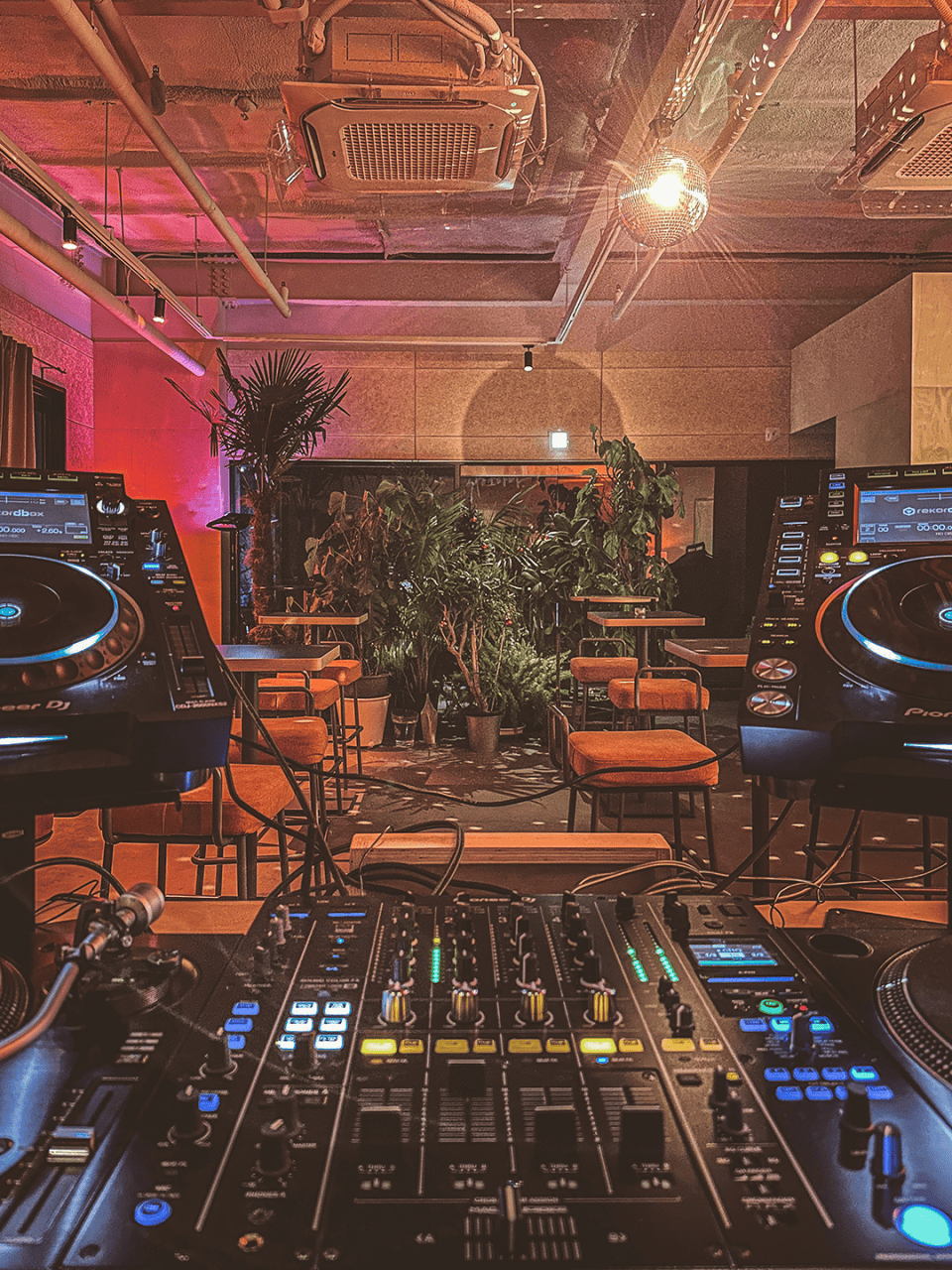
Foreigner-Friendly Nightlife
Unfortunately, it’s pretty common for popular Korean clubs to turn away foreigners. It really sucks!
Since Itaewon is close to the former US military headquarters in South Korea, it’s more foreigner-friendly.
Head to Volnost for underground techno with an incredible sound system.
Itaewon is also the center of Seoul’s queer scene. Kockiri consistently has really good music and is gay-friendly.
Preparing for Your Trip to Seoul
Should I get a SIM card for my trip in Seoul?
Yes. This is because South Korea has higher standards for verifying user identity. Therefore, most apps will require you to have a Korean phone number in order to use them.
This includes ride-hailing and restaurant reservation apps.
I understand that your trip in Seoul would only be for one day. But it’s only 6,500 KRW (4.80 USD) to get a SIM card with unlimited data from LG for one day, plus you can pick it up from the airport.
Is Public Transportation good in Seoul?
Yes. Public transportation is convenient, reliable and generally clean in Seoul.

I would suggest getting around by subway or bus.
The bus is less reliable, but it can be a fun way to experience life in Seoul, including the city views.

As for taxi, Uber is an option.

But the main ride-hailing app in Korea is Kakao Taxi (Apple App Store, Google Play Store).
It’s not impossible to catch a cab by hailing down old-school style, but most Koreans use ride-hailing apps.
Pro Tip: It’s not going to be possible to link a credit card on the Kakao Taxi app (as well as most Korean apps, in general) because they require to check your identity (which isn’t possible if you have a temporary SIM card). On the Kakao Taxi payment options, scroll down to select pay in cab. Then, you’ll be able to pay using a credit card, T-Money card, or cash after your ride ends.
Is Seoul walkable?
Yes and No. Seoul has many walkable neighborhoods, but it can be challenging to walk from one neighborhood to the next.
Seoul is an old city with a very long history, so it’s not built in near-perfect grids, the way New York City was planned.
Therefore, I would expect to walk around a ton while exploring a given neighborhood, but be ready to hop on a subway or bus for 20-30 minutes to get to your next neighborhood of interest.
Does Google Maps work in Seoul?
Not really. Walking directions do not work on Google Maps in South Korea.
I would highly suggest that you download the Naver Maps app (Apple App Store; Google Play Store) before you arrive in Seoul.
How do I get to and from the Airport?
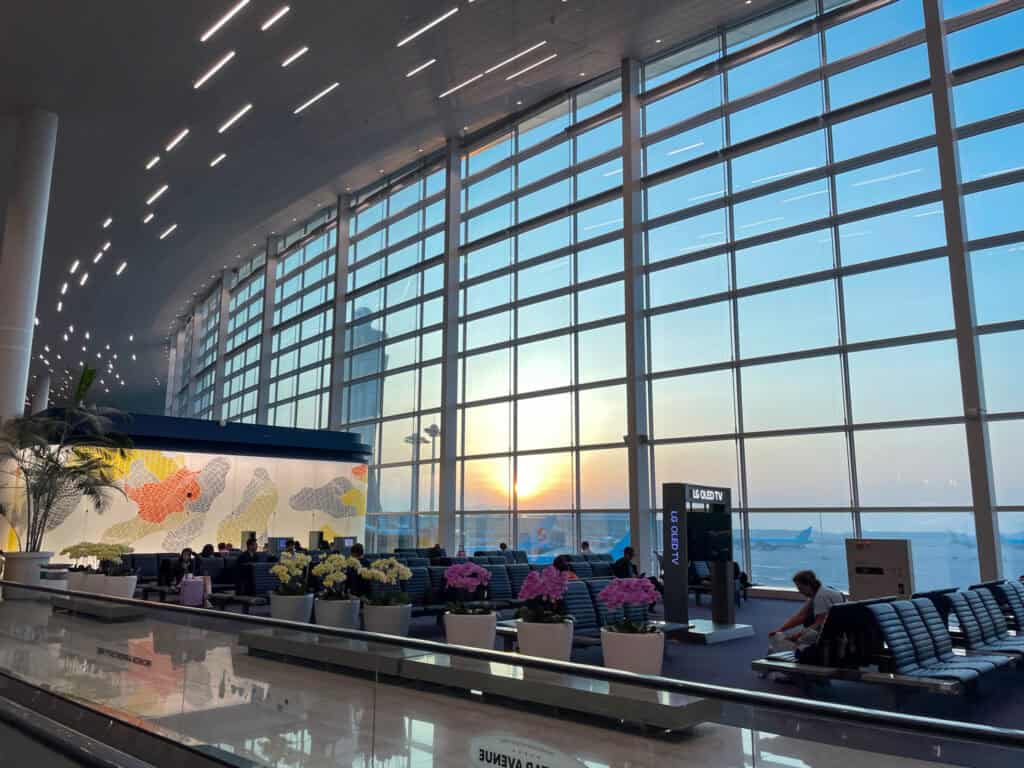
You’ll very likely fly into Incheon International Airport, which is about 40 miles (60 km) from Seoul, South Korea’s capital.
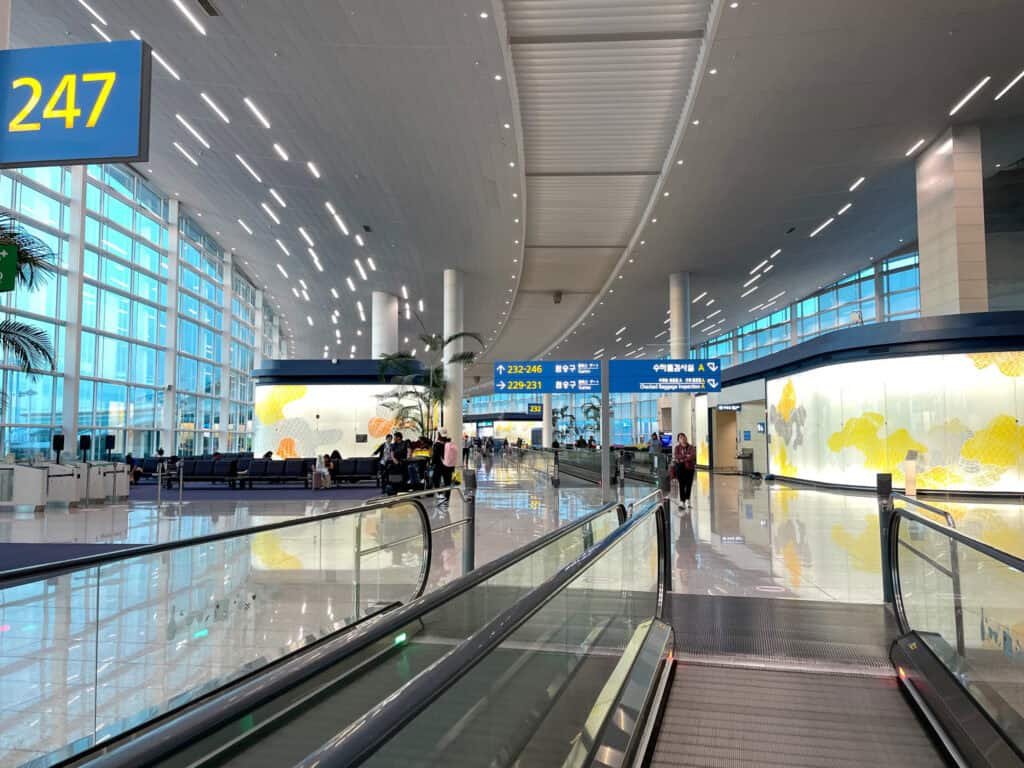
Taxi: ~45 USD
Hiring a taxi from the airport to Seoul will cost you around 60,000 KRW (45 USD).
Airport Bus: Reliable and 14 USD
The bus is actually a pretty reliable, comfortable and economical way to get to and from the Seoul airport (18,500 KRW, 14 USD).
If hiring a taxi is out of budget, then I would plan to take the airport bus instead.
Naver Maps will be your best bet in figuring out which airport bus to take.
Airport Railroad Express (AREX): Service Is Limited, 8 USD
The Airport Railroad Express is reliable, but it only runs every 40 minutes and only goes between the airport and Seoul Station.
The train tickets cost 11,000 KRW (8 USD) and you can pre-book them online.
But I would suggest buying them in person when you’re arriving in Seoul, because there’s usually plenty of seats, and it will reduce the stress of figuring out what to do if your travel gets delayed.
What To Do in Seoul for a Day (Conclusion)
In this guide, we went over what to do in Seoul for a day.
If it’s your first time in Seoul, worry not! This guide is the best way to hit the top historic sightseeing spots and get an authentic, unique experience all within a short time.
What To Do in Seoul for a Day
Morning (9am-12pm)
- Gyeongbokgung Palace (경복궁): Main Royal Palace of Joseon Dynasty
- National Palace Museum of Korea (국립고궁박물관): Learn about the Joseon Dynasty
- Bukchon Hanok Village (북촌 한옥마을): Take in the Beauty of Traditional Korean Houses
- Optional Add-Ons
Afternoon (2-5pm)
- Gwangjang Market (광장시장): Korea’s OG Market from the Late Joseon Dynasty
- Seongsu-dong (성수동): Shop & Stroll the Brooklyn of Seoul
- Other Options
Evening (5-8pm)
- Authentic Korean Food for Dinner
- Option 1: Korean BBQ at Seongsu-dong Galbi Alley
- Option 2: Contemporary Korean & Fine Dining in Classy Hannam
- N Seoul Tower (남산서울타워): Gaze at the Seoul Night Views
- Myeongdong Shopping Street (명동거리): Gift Shopping & Street Food
Night (8pm onward)
- Wholesome (and Family-Friendly) Options
- Option 1: Sing to your Heart’s Desire at a Noraebang
- Option 2: Relax at a Korean Bathhouse
- Option 3: Korean Food by the Han River
- Bars & Clubs | Party like a Korean
- Legendary Cocktails
- Speakeasies You Won’t Forget
- Live Jazz Performances
- Rooftop Bars with Dazzling Views
- Bump to EDM All Night
- Foreigner-Friendly Nightlife
Preparing for Your Trip to Seoul
- Should I get a SIM card for my trip in Seoul?
- Is Public Transportation good in Seoul?
- Is Seoul Walkable?
- Does Google Maps work in Seoul?
- How do I get to and from the Airport?
Thanks for checking out my guide about what to do in Seoul for a day!

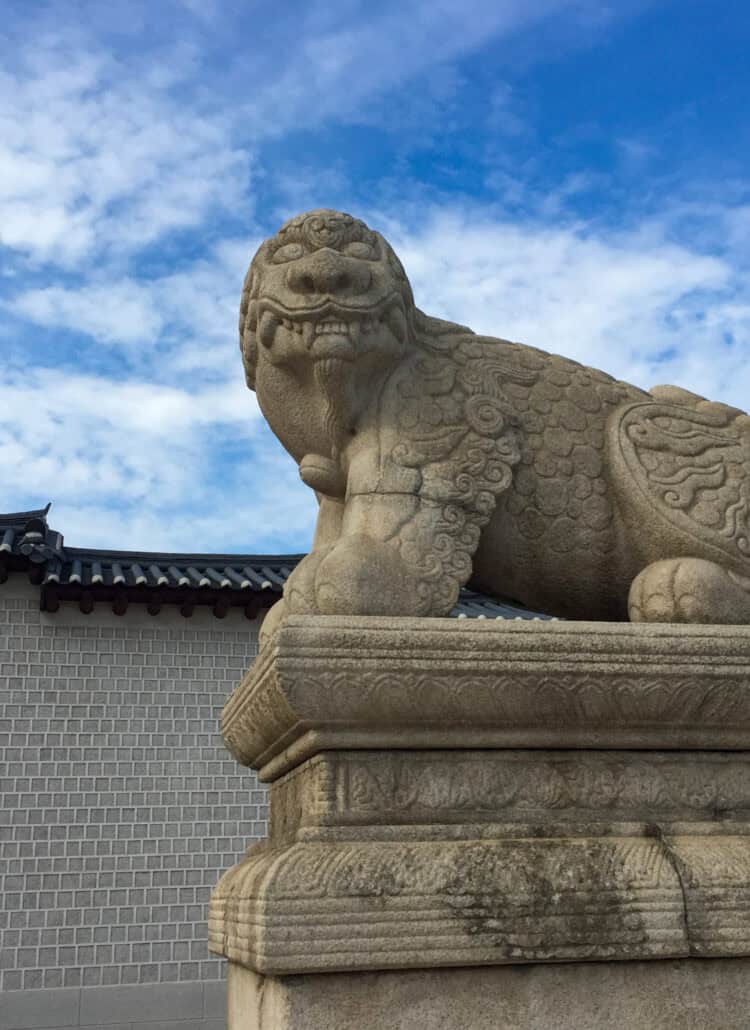
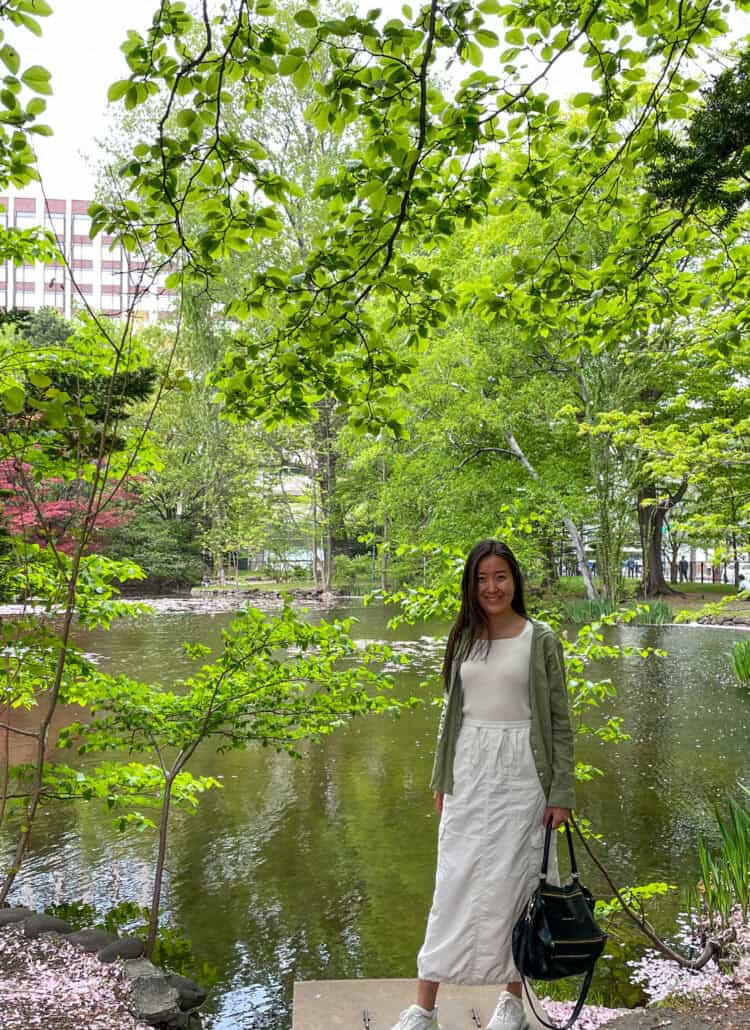
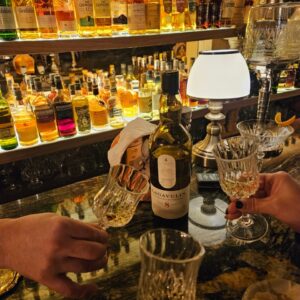
Leave a Reply